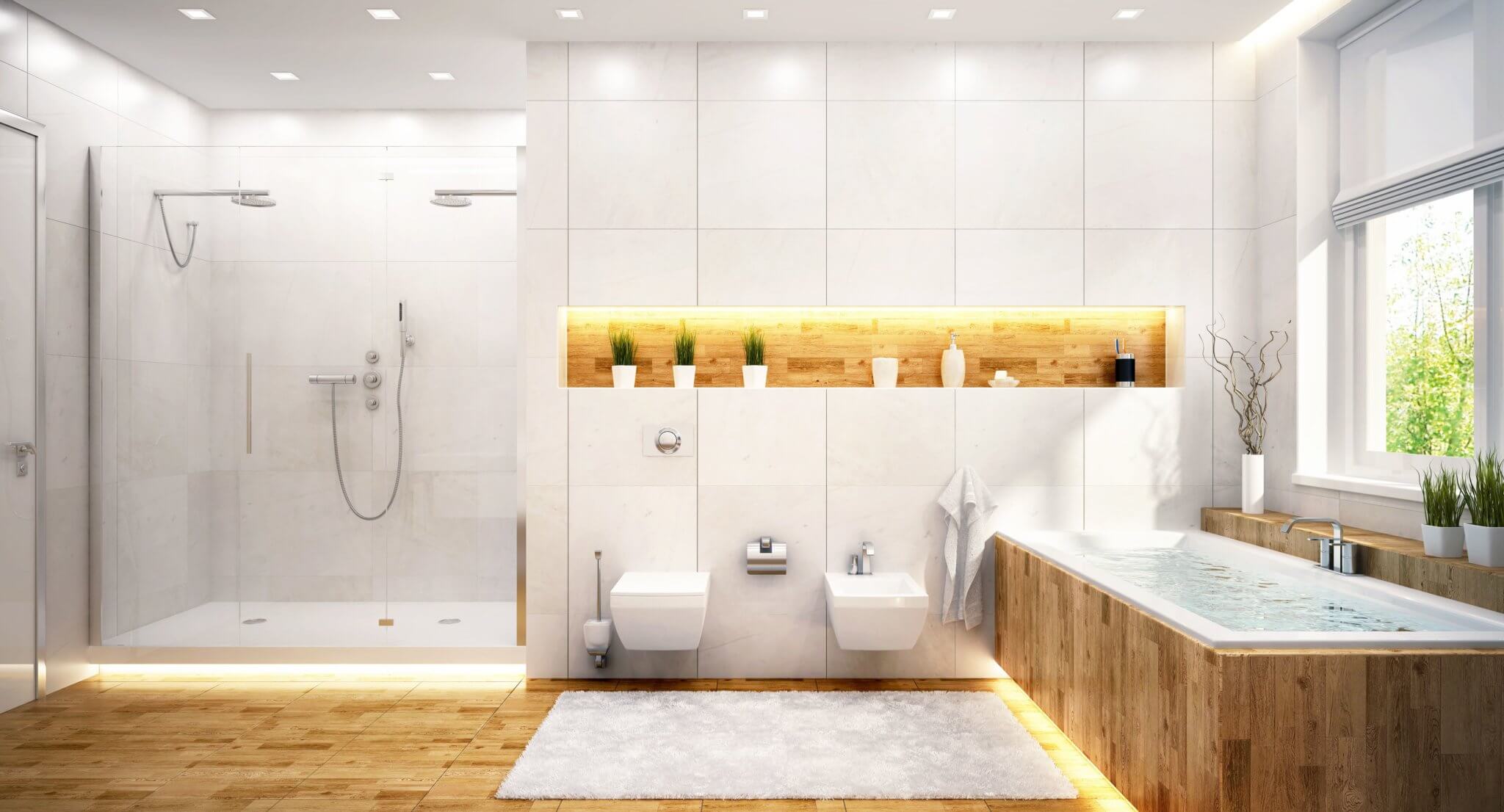An Aging-in-Place Preparation Guide
The idea of “aging in place” revolves around setting up living space to tend to all of one’s needs over a long period of time — typically later on in life. Aging in place works to avoid alternative options such as downsizing, moving into a retirement community, or utilizing assisted living for as long as possible.
Everything from bathroom updates to furnace repair and maintenance should be taken into consideration when preparing a home for aging in place. Here are ten of the most important things to keep in mind.
Open Floor Plan
Start by considering the floor plan of the space that you’re preparing. Are you dealing with multiple floors? If so, can you find a new single-story space? If not, can you reduce your essential functions to the ground floor?
In addition to the number of floors, consider any obstructions or spatial adjustments that can be beneficial. Can you replace small flights of stairs with a ramp? Can unnecessary walls be removed to open up space for smoother traffic? Can you install a central HVAC system to provide a single, easy-to-access heating and cooling thermostat? Creating an open floor plan is an important initial step in the aging-in-place process.
Updated Lighting
It’s easy to overlook lighting, as it is an aspect of a living space that is easy to take for granted. Light bulbs are only changed occasionally and it’s easy to adjust to living in a dimly lit space.
However, if you want to be prepared to age in place, it’s important to consider how you can set up your lighting to help rather than hinder that long-term goal. A few suggestions include:
- Replacing light bulbs with LED alternatives to necessitate fewer light bulb changes.
- Installing lighting under cabinets to illuminate the counters and floors.
- Ensuring that the closet, basements, and any other dimly lit spaces have adequate lighting in place.
- Using easily-accessible switches to control your lighting
By putting in new lighting systems and using longer-lasting bulbs, you can ensure that your space is properly lit over time.
Accessible Storage
When it comes to storing everyday items like food and clothing, you want to have accessible space ready. Take the time to go over your home’s cupboards, closets, dressers, and any other drawers that are used regularly. Are they properly functioning? Are they a good height from the ground?
Handrails
Consider installing handrails wherever necessary to give yourself or your loved one a hand as they move from one place to the next. A few common places where handrails are necessary include:
- Stairs: Including smaller flights of a few steps.
- The bedroom: Especially near a bed.
- The bathroom: Particularly around the toilet and shower.
It’s recommended that you use rounded handrails that aren’t too big. Make sure to always install them (or have them installed) securely.
Bathroom Updates
The bathroom can pose some of the greatest challenges, particularly to a senior who is aging in place. A few updates to consider include:
- Installing a walk-in shower or bathtub.
- Getting a seat extender or adjusting your toilet height.
- Setting up a shower seat.
- Replacing a stationary shower head with a handheld alternative.
- Adding a mat or anti-slip coating to both the floor and the bathtub.
The bathroom is one of the worst areas where slip-and-fall accidents can occur. Make sure to prepare yours properly.
Replaced Doors
If you have narrow or otherwise challenging apertures in your living space, they can pose a potential hazard. Make sure that all of your doorways are as wide as possible — ideally, they should be at least 36 inches to leave room for possible wheelchair access.
Along with width, consider installing lever-style, comfortable handles. Also, use pocket doors when you can, avoid steps in entryways, and even consider ensuring that your refrigerator door has plenty of storage to avoid the need to dig around the back of the fridge.
Safe Flooring
Flooring is a critical aspect of aging in place. Slippery or hard-to-navigate floors can once again pose unnecessary risk. Go over your home’s floors — especially high-traffic zones — and look for any slippery areas. Consider replacing them whenever you can, as was already recommended for the bathroom floor.
Avoid throw rugs and other potential tripping hazards. Make sure ramps are installed whenever possible, too, especially for tricky room transitions.
Phone Line in the Bedroom
Whether it’s a dedicated landline or a cell phone charging port, you must have a phone set up in your bedroom. As you age, you may find it more difficult to go longer distances in search of help.
When an emergency arises, you always want to have a form of communication ready to go and in arm’s reach.
Height-Adjusted Sinks and Appliances
Consider each appliance and water fixture in your home. Wherever necessary, make height adjustments; particularly to ensure that everything is wheelchair accessible.
Use of Accessible Technology
Finally, consider implementing technology throughout your household. Smart homes can be convenient for those who are aging in place.
Use automation via a smart thermostat to control your heating and air conditioning. Install voice-activated lights and door locks. Use cameras to see who’s at the door. There are a number of ways to use technology to govern your home from the comfort of your favorite chair.


